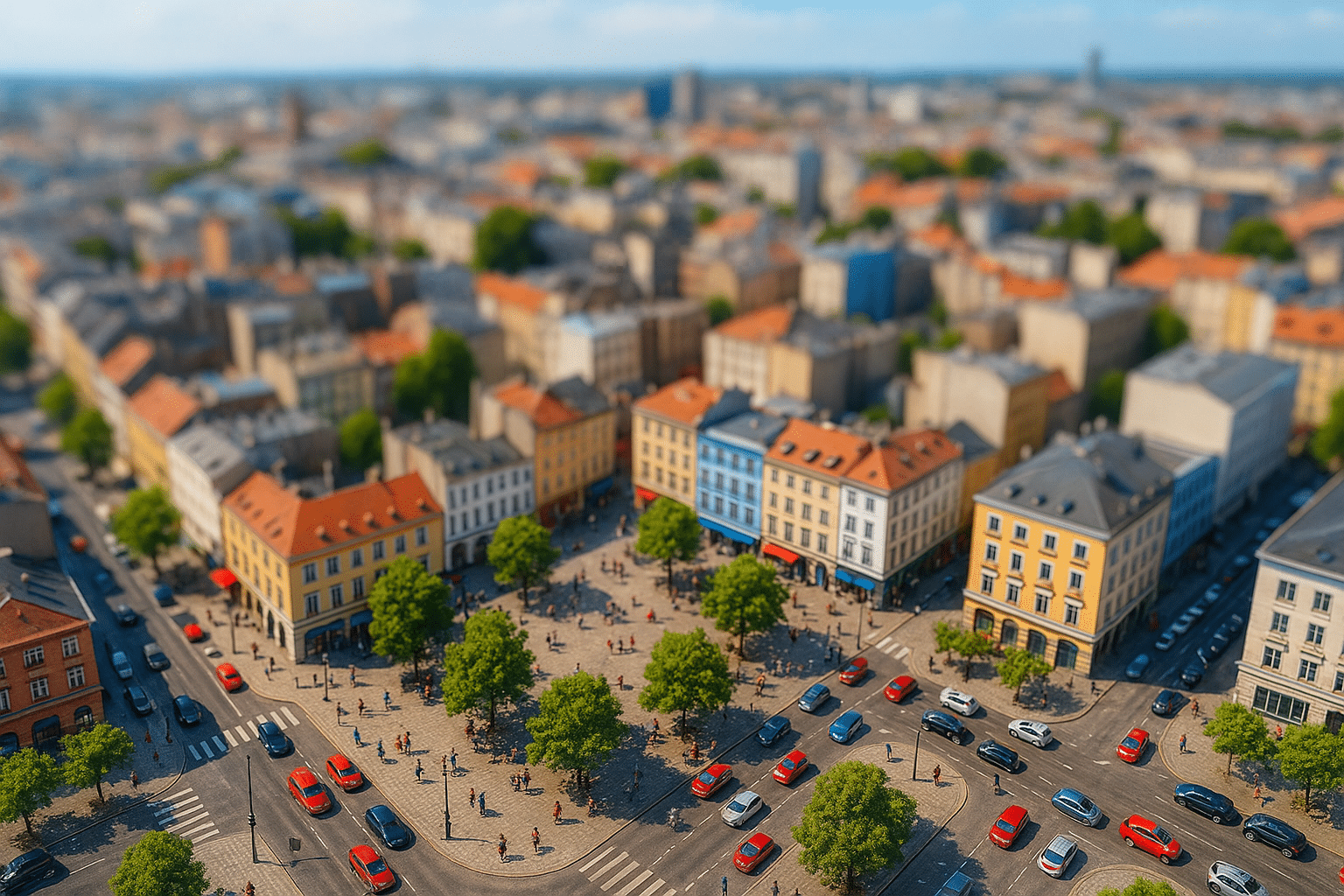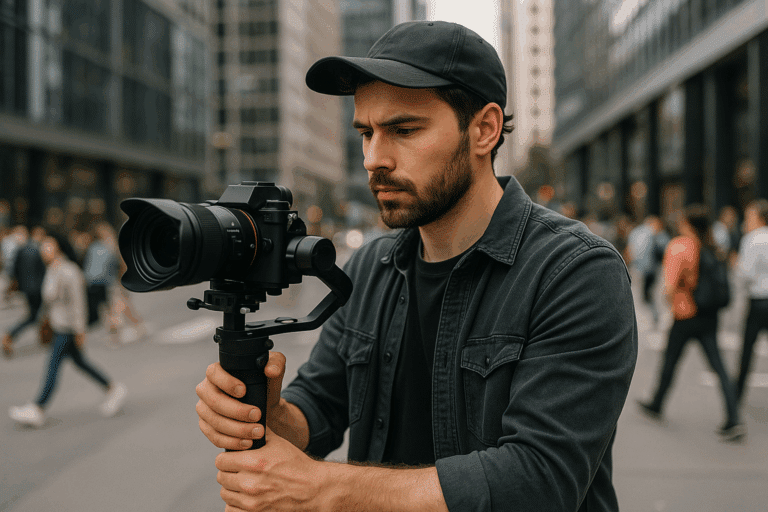Ever marvelled at those mesmerizingly miniature worlds captured in a photograph, making life-sized structures appear like diminutive models? Yes, you got it right, we’re talking about the artistic realm of tilt-shift photography, but with a fascinating twist – the faux or fake tilt-shift! This ingenious technique replicates the captivating effects of a true tilt-shift lens, but without the hefty price tag.📸
In this comprehensive exploration, we will delve into the depths of fake tilt-shift photography. We’ll take you on a journey through its theoretical foundations, the science behind its magical allure, and hands-on tips for mastering this art. Whether you’re an amateur photographer looking to experiment with new techniques, or a professional seeking to diversify your portfolio, this guide will equip you with the knowledge and skills to create captivating miniature scenes.
📚 What to Expect from This Article
Ever wondered why your eyes perceive tilt-shift images as miniatures? Or what role depth of field plays in this illusion? Well, wonder no more! We will kick off our exploration by discussing the cognitive psychology behind tilt-shift photography and how it tricks our brain into perceiving life-sized objects as miniatures.
Once we’ve quenched your thirst for knowledge with some theory, it’ll be time to get our hands dirty. We’ll dive into the practicalities of creating the fake tilt-shift effect, guiding you through the process step-by-step – from choosing the right subject and composition, to manipulating depth of field and post-processing. Along the way, we’ll share some of our favorite tilt-shift images to inspire you and provide pointers for achieving similar results.
By the end of this article, you will have a comprehensive understanding of the magic of fake tilt-shift photography, and the tools necessary to create your own mesmerizing miniature scenes.🔧
🎯 Who This Guide Is For
This guide is written with a wide audience in mind. Whether you’re a hobbyist photographer looking to add a new technique to your repertoire, or a seasoned professional seeking to elevate your portfolio with this unique style, you’ll find this guide to be a valuable resource.
Even if you’re not a photographer, but have a keen interest in the interplay of art and cognitive science, this article will provide you with a fascinating insight into a unique photographic technique and the psychology behind it.🧠
🔑 Key Topics Covered
While we aim to provide a comprehensive overview of fake tilt-shift photography, we’ve also broken down the topic into key areas for easier understanding and reference:
- The psychology behind why our eyes perceive tilt-shift images as miniatures
- The science of depth of field and its role in creating the tilt-shift effect
- Choosing the right subject and composition for effective tilt-shift photography
- Step-by-step guide to creating the fake tilt-shift effect in-camera and during post-processing
- Examples of compelling tilt-shift images and analysis of how the effect was achieved
So, ready to embark on this journey into the magical world of fake tilt-shift photography? Then buckle up, keep your eyes wide open, and let’s dive right in! 🚀
🔍 Unraveling the Enigma: The Science Behind Fake Tilt-Shift Photography
Creating captivating miniature scenes using fake tilt-shift photography has become a popular trend among photographers. This technique gives a unique, mesmerizing quality to images, making them look like tiny, model-world scenarios. It’s almost like holding an enchanting, miniature world in the palm of your hand.
But what exactly is tilt-shift photography? And how can you master it to create your miniature scenes? This comprehensive guide will delve into the world of fake tilt-shift photography and provide a detailed roadmap on how to navigate its intriguing landscape.
Let’s embark on this fascinating journey!
💡 Understanding Tilt-Shift Photography
Tilt-shift photography is a creative technique that employs the use of special lenses capable of tilting and shifting, hence the name. The tilting adjusts the plane of focus, while the shifting controls the position of the subject in the image without moving the camera. The combined effect gives the viewer the illusion of looking at a miniature model rather than a real-world scene.
However, achieving this effect requires special equipment, which may not be readily available or affordable for everyone. Here’s where the magic of fake tilt-shift photography comes in – you can recreate this effect using standard lenses and some post-production wizardry. This simulated approach, often termed as ‘miniature faking’, is a boon for photography enthusiasts who wish to experiment with tilt-shift photography without investing in expensive gear.
🔧 The Mechanics of Fake Tilt-Shift Photography
To master the art of fake tilt-shift photography, it’s essential to understand its underlying mechanics. The technique primarily revolves around manipulating depth of field (DoF) to mimic the miniature effect. By selectively blurring parts of the image, it tricks the viewer’s brain into perceiving the sharp areas as miniature objects. So, how do we achieve this effect? Let’s break down the process step by step.
📸 Shooting the Scene
Your journey towards creating stunning miniature scenes starts with capturing the right kind of photograph. A high vantage point is often preferred as it adds to the miniaturization effect. Aerial views of cityscapes, parks, or crowded streets work wonderfully well with fake tilt-shift photography. When shooting, ensure that the scene has depth – elements in the foreground, middle, and background. This will help enhance the depth of field manipulation in the post-processing stage.
🎨 Post-Processing Magic
Once you have the right image, the next step is post-processing. This is where the magic of fake tilt-shift photography truly comes to life. Using software like Adobe Photoshop or Lightroom, you can apply a selective blur to your image. The central area is kept sharp, with the blur increasing towards the top and bottom of the image. This selective focus creates the illusion of a shallow depth of field, typical of macro photography, hence giving the image a miniature feel.
For a detailed guide on how to apply fake tilt-shift effect in Photoshop, check out the tutorial by Photoshop Essentials on YouTube titled “How to Create a Fake Tilt-Shift Effect in Photoshop“.
📈 Comparing Real vs. Fake Tilt-Shift Photography
Now that you have an understanding of how fake tilt-shift photography works, you might be wondering how it compares to real tilt-shift photography. Both methods have their unique benefits and drawbacks. Let’s explore these differences in the following comparative table:
| Aspect | Real Tilt-Shift Photography | Fake Tilt-Shift Photography |
|---|---|---|
| Equipment Required | Specialized tilt-shift lenses | Standard lenses and post-processing software |
| Cost | High (due to specialized equipment) | Low (no need for expensive gear) |
| Flexibility | Can be adjusted on the spot while shooting | Adjustments are made in post-processing, offering unlimited revisions |
| Learning Curve | Requires understanding of lens movements and optical principles | Requires basic photography skills and familiarity with photo editing software |
Whether you choose real or fake tilt-shift photography ultimately depends on your specific needs, resources, and preferences. However, the affordability and accessibility of fake tilt-shift photography make it a popular choice for many photography enthusiasts.
👣 Walking the Path: Mastering Fake Tilt-Shift Photography
Now, it’s time to put theory into practice. Let’s dive into the nitty-gritty of how you can master the art of creating captivating miniature scenes using fake tilt-shift photography.
🎯 Step 1: Choose the Right Scene
As discussed earlier, the choice of scene plays a vital role in fake tilt-shift photography. Opt for scenes with depth and plenty of small details. A high vantage point can further enhance the miniature effect.
🎯 Step 2: Post-Processing
Use photo editing software like Adobe Photoshop or Lightroom to apply a selective blur to your image. Remember, the central area should be sharp with the blur increasing towards the top and bottom of the image. Don’t overdo the blur, subtlety is key!
🎯 Step 3: Fine-Tuning
Experiment with saturation and contrast levels. Usually, increasing the saturation gives the image a vibrant, toy-like feel, adding to the miniature effect. However, each image is unique, so feel free to experiment until you achieve the desired result.
And voila! With these steps, you’re well on your way to mastering fake tilt-shift photography. Remember, practice makes perfect. So keep experimenting, learning, and above all, enjoy the process of creating your miniature worlds!
🛠 Useful Tools and Resources
To help you on your journey, here are some tools and resources that can come in handy:
- Adobe Photoshop: This software offers a ‘Lens Blur’ feature that can be used to create the tilt-shift effect.
- Adobe Lightroom: Similar to Photoshop, Lightroom also offers features to create a selective blur effect.
- Tilt-Shift Maker: An online tool that lets you add a tilt-shift effect to your images.
- YouTube tutorials: There are plenty of tutorials available online that provide step-by-step guides on how to achieve the fake tilt-shift effect. A good one to start with is “Fake Tilt-Shift Photography Tutorial” by Photoshop Essentials.
Armed with these tools and resources, and the knowledge you’ve gained from this guide, you’re all set to delve into the captivating world of fake tilt-shift photography. So go ahead, pick up your camera, and start creating your miniature masterpieces!

Conclusion
As we have navigated through this detailed journey of understanding the intricate concepts surrounding IT and engineering, it becomes clear that mastering these areas is not an overnight event. From discussing the basics of data structures and algorithms to delving into the depths of software development and system engineering, our exploration has been both enlightening and comprehensive.
Reflecting back on the principal points, we embarked on a study of data structures and algorithms, understanding their crucial role in enhancing software efficiency. The interplay between linear and non-linear data structures, as well as the application of various search and sort algorithms, was discussed to illuminate how they contribute to the optimization of software performance.
Next, we ventured into the vast domain of software development. Here, we unfolded the importance of adopting a systematic approach, exploring various development methodologies such as Agile, Scrum, and DevOps. Furthermore, we stressed the significance of software testing, emphasizing that quality assurance should not be an afterthought, but an integral part of the development process.
Our journey also took us through the terrain of systems engineering. We learned how it involves coordinating different teams and integrating varied systems to create a product that meets the client’s needs. Through this, we learned how a holistic view of a project is essential for its successful completion.
💡 Remember, these complex concepts become simpler when we approach them step by step. The field of IT and engineering is constantly evolving, and it requires continuous learning and adaptation. So, don’t be daunted by the complexity – embrace it!
The technical world can indeed seem overwhelming, but the rewards of diving deep into it are immense. Whether you’re a seasoned professional, a budding engineer, or simply a tech enthusiast, enhancing your understanding of these areas can open up numerous opportunities. I encourage you to reflect on what you’ve learned, share these insights with others, and put them into practice.
As always, I welcome your thoughts and comments below. Let’s keep the conversation going and learn from each other. Don’t forget to share this article on your social channels if you found it helpful and insightful.
In conclusion, this article has only scratched the surface of the vast ocean of knowledge that is IT and engineering. There is so much more to learn and explore. So, stay curious, keep learning, and let’s continue this journey together. 🚀
Tags: [data structures] [algorithms] [software development] [systems engineering] [IT] [engineering]


